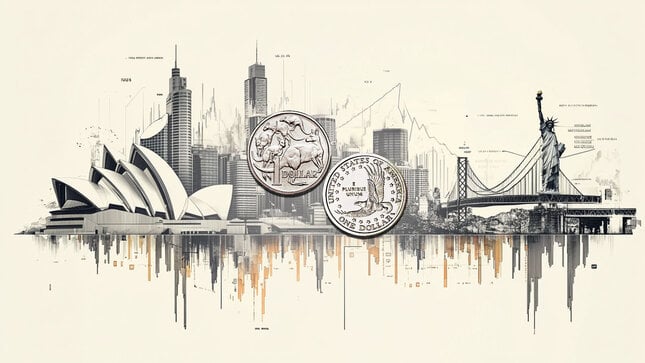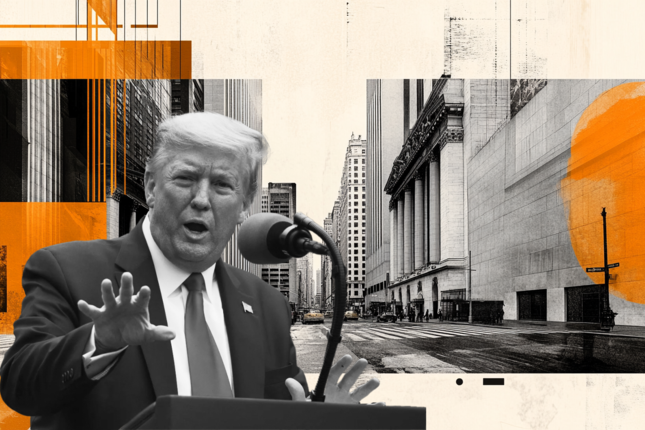Chief Powell participates in a moderated discussion at the New York Times DealBook Summit, in New York.
Key Takeaways
Independence lets the Fed make decisions for all Americans, not any political party.
There is broad support in both parties for an independent Fed; do not think there is risk of losing it.
The U.S. economy is in remarkably good shape.
Feel very good about where monetary policy is.
Do not think appointment of a "shadow" Fed chair is on the table.
Feel the same institutional relationships between the Fed and the Treasury will continue under the new administration.
Confident of having the same type of relationship with Bessent as with other Treasury Secretaries.
Trump said the same things privately in his first administration as he did publicly.
Asked about the influence of the new Doge program on the central banks, says part of the Fed's independence is that it is self-funded.
Fed tries to be good stewards of the public's money.
The trend towards central bank transparency has been constructive for making policy.
Unemployment is still very low and making progress on inflation.
The economy is in good shape and there is no reason it can't continue.
On a path to more neutral rates over time, though downside risks are less than thought, Fed can afford to be cautious in finding neutral.
Fed is trying to be in a middle place where policy is less restrictive so inflation can fall, but not damage the labor market.
Lower survey response levels are likely increasing volatility in estimates of labor market data.
This section below was published as a preview of the Federal Reserve Chair Jerome Powell's participation at the New York Times DealBook Summit event at 17:45 GMT.
- Comments from Fed Chief Jerome Powell will be closely followed midweek to get clues about the interest rate outlook.
- The Fed is seen reducing its interest rates by a quarter point at this month’s meeting.
- The US labour market takes centre stage this week, with NFP due on Friday.
Federal Reserve Chair Jerome Powell is set to participate in a moderated discussion on the economic outlook on Wednesday at the New York Times DealBook Summit in New York. Investors will closely monitor his remarks, eager for any signals about future monetary policy.
The event comes at a time when markets largely expect the Fed to cut its policy rate by another 25 basis points during its December 17-18 meeting. However, this expectation lost some momentum following Powell's remarks at an event in Dallas on November 14.
During his Dallas speech, Powell indicated that the Fed could take its time before making further rate cuts. He pointed to steady economic growth, a strong labour market, and inflation remaining above the Fed's 2% target as reasons for a cautious approach. His comments aligned with the views of FOMC Governor Michelle Bowman, who has consistently advocated for a prudent stance on rate adjustments.
As of now, the probability of a 25-basis-point rate cut this month stands at approximately 75%, according to the CME Group’s FedWatch Tool. However, investors anticipate no more than 75 basis points of easing over the next 12 months.
The Fed and Trump: A collision course ahead?
The return of former President Donald Trump to the White House has raised concerns about renewed inflationary pressures. His proposed policies could significantly alter the economic landscape, featuring looser fiscal measures, the reintroduction of tariffs on exports from China, Europe, Mexico, Canada, and the BRICS nations, as well as stricter immigration policies.
In fact, a new chapter in the US-China trade war has already begun. China recently announced a ban on exporting gallium, germanium, and antimony to the US – minerals critical for military technologies. This move came just one day after Washington introduced new restrictions targeting China’s semiconductor industry.
While Powell has repeatedly declined to speculate on the economic impacts of potential policies under a renewed Trump administration, it's likely that any resurgence in inflationary pressures could lead the Fed to pause or even halt its current easing cycle.
Amid these developments, the US Dollar (USD) surged in October and November before entering a period of consolidation/correction. However, this pause should be temporary, leaving the bullish outlook for 2025 unchanged.
About Jerome Powell (via Federalreserve.gov)
"Jerome H. Powell first took office as Chair of the Board of Governors of the Federal Reserve System on February 5, 2018, for a four-year term. He was reappointed to the office and sworn in for a second four-year term on May 23, 2022. Mr. Powell also serves as Chairman of the Federal Open Market Committee, the System's principal monetary policymaking body. Mr. Powell has served as a member of the Board of Governors since taking office on May 25, 2012, to fill an unexpired term. He was reappointed to the Board and sworn in on June 16, 2014, for a term ending January 31, 2028."
US Dollar FAQs
The US Dollar (USD) is the official currency of the United States of America, and the ‘de facto’ currency of a significant number of other countries where it is found in circulation alongside local notes. It is the most heavily traded currency in the world, accounting for over 88% of all global foreign exchange turnover, or an average of $6.6 trillion in transactions per day, according to data from 2022. Following the second world war, the USD took over from the British Pound as the world’s reserve currency. For most of its history, the US Dollar was backed by Gold, until the Bretton Woods Agreement in 1971 when the Gold Standard went away.
The most important single factor impacting on the value of the US Dollar is monetary policy, which is shaped by the Federal Reserve (Fed). The Fed has two mandates: to achieve price stability (control inflation) and foster full employment. Its primary tool to achieve these two goals is by adjusting interest rates. When prices are rising too quickly and inflation is above the Fed’s 2% target, the Fed will raise rates, which helps the USD value. When inflation falls below 2% or the Unemployment Rate is too high, the Fed may lower interest rates, which weighs on the Greenback.
In extreme situations, the Federal Reserve can also print more Dollars and enact quantitative easing (QE). QE is the process by which the Fed substantially increases the flow of credit in a stuck financial system. It is a non-standard policy measure used when credit has dried up because banks will not lend to each other (out of the fear of counterparty default). It is a last resort when simply lowering interest rates is unlikely to achieve the necessary result. It was the Fed’s weapon of choice to combat the credit crunch that occurred during the Great Financial Crisis in 2008. It involves the Fed printing more Dollars and using them to buy US government bonds predominantly from financial institutions. QE usually leads to a weaker US Dollar.
Quantitative tightening (QT) is the reverse process whereby the Federal Reserve stops buying bonds from financial institutions and does not reinvest the principal from the bonds it holds maturing in new purchases. It is usually positive for the US Dollar.
Fed FAQs
Monetary policy in the US is shaped by the Federal Reserve (Fed). The Fed has two mandates: to achieve price stability and foster full employment. Its primary tool to achieve these goals is by adjusting interest rates. When prices are rising too quickly and inflation is above the Fed’s 2% target, it raises interest rates, increasing borrowing costs throughout the economy. This results in a stronger US Dollar (USD) as it makes the US a more attractive place for international investors to park their money. When inflation falls below 2% or the Unemployment Rate is too high, the Fed may lower interest rates to encourage borrowing, which weighs on the Greenback.
The Federal Reserve (Fed) holds eight policy meetings a year, where the Federal Open Market Committee (FOMC) assesses economic conditions and makes monetary policy decisions. The FOMC is attended by twelve Fed officials – the seven members of the Board of Governors, the president of the Federal Reserve Bank of New York, and four of the remaining eleven regional Reserve Bank presidents, who serve one-year terms on a rotating basis.
In extreme situations, the Federal Reserve may resort to a policy named Quantitative Easing (QE). QE is the process by which the Fed substantially increases the flow of credit in a stuck financial system. It is a non-standard policy measure used during crises or when inflation is extremely low. It was the Fed’s weapon of choice during the Great Financial Crisis in 2008. It involves the Fed printing more Dollars and using them to buy high grade bonds from financial institutions. QE usually weakens the US Dollar.
Quantitative tightening (QT) is the reverse process of QE, whereby the Federal Reserve stops buying bonds from financial institutions and does not reinvest the principal from the bonds it holds maturing, to purchase new bonds. It is usually positive for the value of the US Dollar.
Information on these pages contains forward-looking statements that involve risks and uncertainties. Markets and instruments profiled on this page are for informational purposes only and should not in any way come across as a recommendation to buy or sell in these assets. You should do your own thorough research before making any investment decisions. FXStreet does not in any way guarantee that this information is free from mistakes, errors, or material misstatements. It also does not guarantee that this information is of a timely nature. Investing in Open Markets involves a great deal of risk, including the loss of all or a portion of your investment, as well as emotional distress. All risks, losses and costs associated with investing, including total loss of principal, are your responsibility. The views and opinions expressed in this article are those of the authors and do not necessarily reflect the official policy or position of FXStreet nor its advertisers. The author will not be held responsible for information that is found at the end of links posted on this page.
If not otherwise explicitly mentioned in the body of the article, at the time of writing, the author has no position in any stock mentioned in this article and no business relationship with any company mentioned. The author has not received compensation for writing this article, other than from FXStreet.
FXStreet and the author do not provide personalized recommendations. The author makes no representations as to the accuracy, completeness, or suitability of this information. FXStreet and the author will not be liable for any errors, omissions or any losses, injuries or damages arising from this information and its display or use. Errors and omissions excepted.
The author and FXStreet are not registered investment advisors and nothing in this article is intended to be investment advice.
Recommended content
Editors’ Picks

AUD/USD consolidates around 0.6400; remains close to YTD top
AUD/USD holds steady around the 0.6400 mark on Friday and remains well within striking distance of the YTD peak touched earlier this week. A positive risk tone, along with the potential for a de-escalation in the US-China trade war, act as a tailwind for the Aussie amid a bank holiday in Australia and the lack of any meaningful USD buying.

USD/JPY edges higher to 143.00 mark despite strong Tokyo CPI print
USD/JPY attracts some dip-buyers following Thursday's pullback from a two-week high as hopes for an eventual US-China trade deal tempers demand for the JPY. Data released this Friday showed that core inflation in Tokyo accelerated sharply in April, bolstering bets for more rate hikes by the BoJ.

Gold price bulls seem reluctant amid the upbeat market mood
Gold price trades with positive bias for the second straight day, though it lacks bullish conviction. Hopes for a faster resolution to the US-China standoff remain supportive of a positive risk tone. Adding to this modest USD uptick caps the upside for the commodity.

TON Foundation appoints new CEO after $400M investment: Will Toncoin price reach $5 in 2025?
TON Foundation has appointed Maximilian Crown, co-founder of MoonPay, as its new CEO. Toncoin price remained muted, consolidating with a tight 2% range between $3.08 and $3.21 on Thursday.

Five fundamentals for the week: Traders confront the trade war, important surveys, key Fed speech Premium
Will the US strike a trade deal with Japan? That would be positive progress. However, recent developments are not that positive, and there's only one certainty: headlines will dominate markets. Fresh US economic data is also of interest.

The Best brokers to trade EUR/USD
SPONSORED Discover the top brokers for trading EUR/USD in 2025. Our list features brokers with competitive spreads, fast execution, and powerful platforms. Whether you're a beginner or an expert, find the right partner to navigate the dynamic Forex market.



